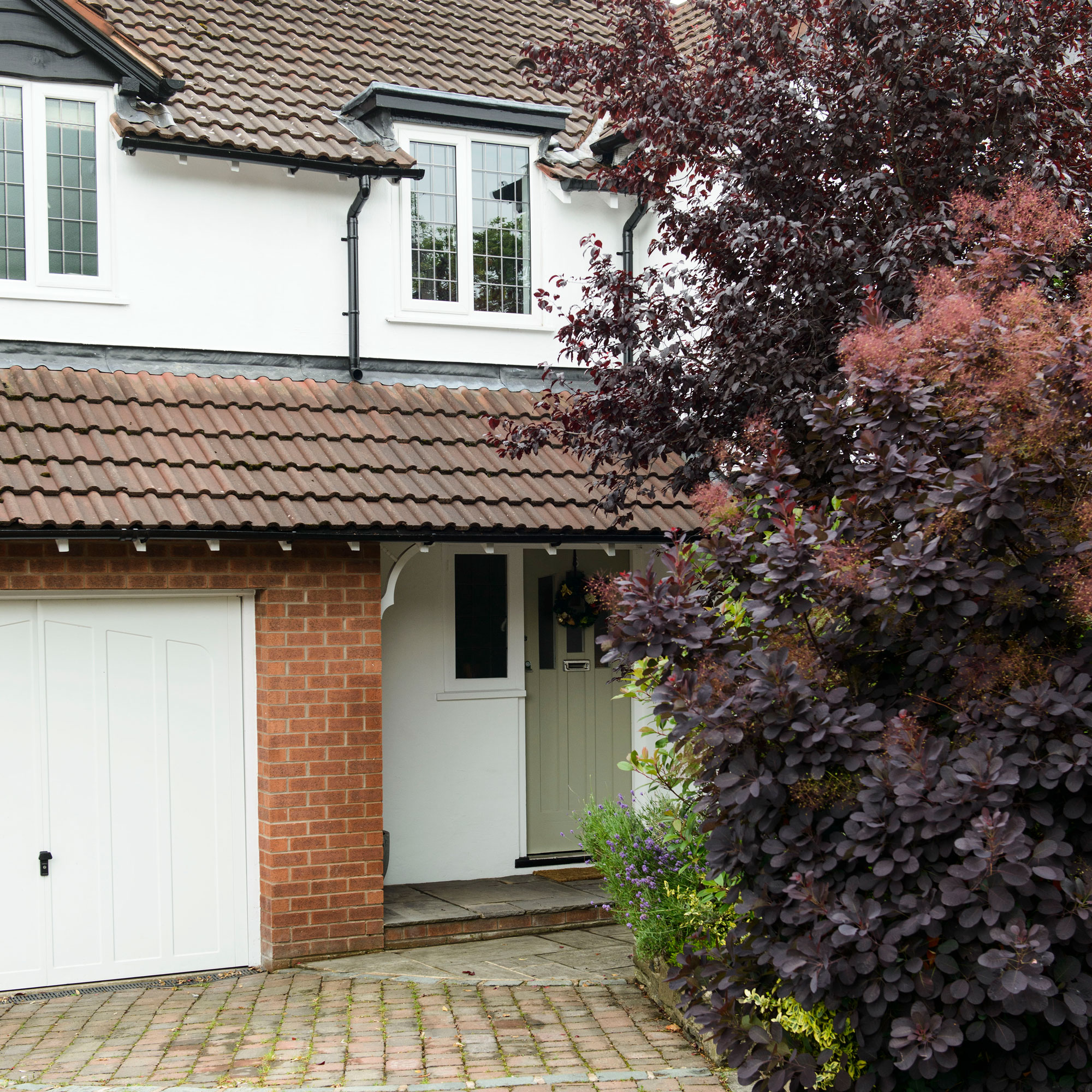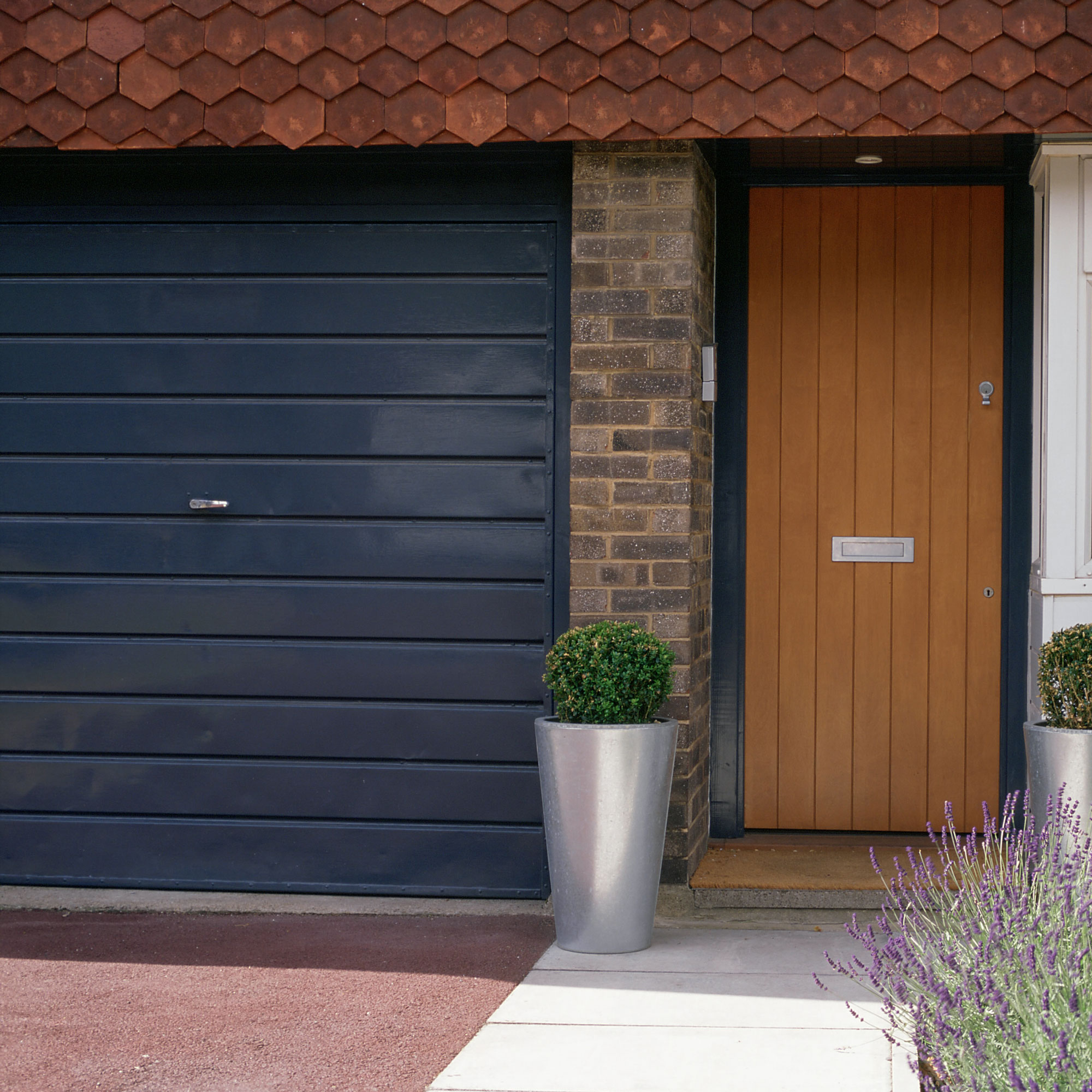How to insulate a garage door – step by step
Follow our guide to garage door insulation to create a warm, dry and energy efficient space

Insulate a garage door to reduce the risk of cold and damp and make it a better place for storage and pursuing hobbies.
Garage doors are typically thin and made from metal. This means they will stay cold on the inside or quickly overheat unless there’s an insulating barrier in place. Even if yours is made from wood, it could still benefit from insulation - just like insulating your home.
‘Most garage doors come with problems like being cold to touch or draughty. They normally have steel or other metal frame materials which have very low, if any, insulation value,’ says Craig Phillips, DIY celebrity and one half of Mr & Mrs DIY. ‘Insulating your garage door will reduce heat loss.’
Insulating a garage door isn’t tricky to do, but, if you’re going to do it yourself, there are things to be aware of to ensure a successful result.
Before you start: what type of garage door do you have?

There are no rules or regulations stating that garage doors must be well insulated, so unless you’ve upgraded it yourself or bought a high spec door, it’s unlikely to be insulated.
The material, style and condition of your garage door will impact on how easy it is to upgrade with insulation. If it’s a bit on the ropey side, you might need to install a new one – but remember that insulation doesn’t come as standard on new garage doors.
How does it open? The points where the door hinges and folds could stop working properly if your new insulation gets in the way. Also be aware of the extra weight and thickness insulation adds, which some garage doors won’t take – meaning the door springs could break. If the style of door doesn’t suit the insulation you add, then all that hard work will be for nothing when the thermal barrier, or even the garage door itself, gets damaged.
Sign up to our newsletter for style inspiration, real homes, project and garden advice and shopping know-how
‘You can always tell by the thickness of the panel,’ says Ian Chubb, Managing Director at garage door specialist Deuren. ‘Non-insulated doors are only a couple of millimetres thick, whereas insulated doors are usually 45mm in thickness.’
How to insulate a garage door – step by step

1. Choose the right insulation for your garage door
There are various ways to insulate a garage door. A popular DIY insulation product for garage doors is reflective foil. You can buy garage door insulation kits that come with everything you need to do the job, including tape and adhesive. These packs are affordable and readily available online.
Rigid foam insulation is another option. ‘You can clad the inside of your garage door with materials such as Kingspan (rigid foam) sheets, which come in various sizes and in different depths,’ says Craig Phillips. Make sure the foam is thinner than the channels inside your door.
2. Work out how much insulation you need to insulate a garage door
Take accurate measurements of the door to make sure you calculate the right amount of insulation. Check for areas where you shouldn’t install insulation to make sure you don’t damage the opening mechanism. Once you’ve got the overall measurement you can then buy your insulation. It’s always a good idea to purchase an extra 5% for cutting and wastage.
3. Prepare your garage door
Clean the door and make sure the surfaces are sound. Clear anything near the door out of the way to allow enough space for you to work, especially if you need to cut the insulation.
4. Make sure you’ve got the right equipment to insulate a garage door
You’ll need to get the right adhesive for the insulation product you choose. You'll also require the right cutting tools to prepare it. ‘You may need to cut the insulation to fit panels on the door, so that it can still open. For instance, if you have a roller door you'll need to trim the sheets and fit them exactly to each roll panel,’ says Jo Behari, DIY expert and TV presenter.
5. Mark up & cut the insulation
Mark up each insulation panel accurately (making sure you don’t damage the product) and cut it safely. Multifoils can be trimmed with a Stanley knife and steel rule, or a good pair of scissors. You’ll probably need a standard handsaw to cut rigid foam.
6. Try the insulation against the door
Before applying the adhesive, offer up the insulation to the panel you want to treat to check that it fits. Adjust if necessary.
7. Fix the insulation to the door
There are different ways to attach different types of insulation. Some kits come with adhesive already attached or you might want to get heavy-duty double-sided tape. Bear in mind some adhesives can damage foam insulation.
8. Seal up the gaps
Depending on the type of garage door, you may want to treat the gaps between boards with insulating tape or seals to further enhance the insulation performance.
9. Draught proof the garage door
It's very important to seal any gaps around the garage door frames to create a fully insulated result. ‘Make sure the four edges of the door frame and where the door meets the frame are sealed correctly,’ says Craig Phillips. ‘This can be done by fitting commercial weather strips.’
Is it difficult to DIY install garage door insulation?

Installing garage door insulation and draught proofing yourself isn’t difficult and most confident DIYers will be up to the task. However, the type of insulation you use and the style of door could add complexity. You also need to make sure you don’t disrupt the opening mechanisms and damage the door.
To simplify things, you could buy a DIY garage door insulation kit. This will include instructions on how to do the job.
Do make sure you have all the necessary materials suitable for the type of insulation – tapes, fixings etc.
Do check out our step-by-step guide to installing garage door insulation.
Don't apply the insulation unevenly across the garage door. This could unbalance the door, meaning it won’t open well, and create cold spots.
Should a professional fit my garage door insulation?
If you’re concerned about whether your DIY skills are up to the task, then you could employ a tradesperson to fit your garage door insulation. If you’re buying a new garage door then you’re going to want a professional to fit it. Check whether the company can offer a supply and install contract.
Do ask if the trades will supply the materials – but look to see if it’s cheaper to get them yourself.
Do speak to more than one trade when looking for quotes.
Don't expect busy builders to want to take a small job on – they might be more likely to quote a sensible price if insulating your door is part of a wider garage renovation project.

Rhoda Parry was the Editorial Director of Ideal Home and its sister titles, 25 Beautiful Homes and Style at Home from 2021-2022. She wass also Editorial Director for Gardeningetc, Amateur Gardening and Easy Gardens. Rhoda is a highly experienced editor and journalist and has worked on many women's lifestyle media brands throughout her career. For the last 20 years, she has specialised in homes, interiors and gardens.